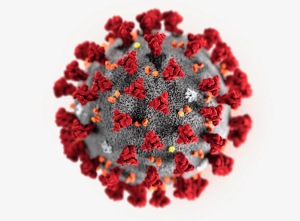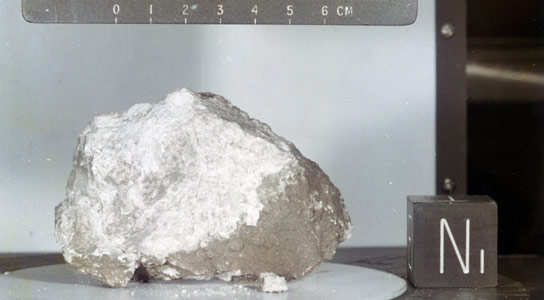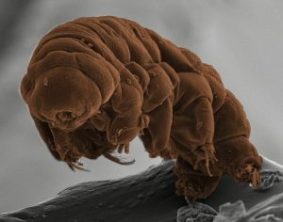
For space scientists of all stripes, few goals are as crucial as bringing pieces of Mars, of asteroids, of other planets and moons back to Earth for the kind of intensive study only possible here. Space missions can, and have, told us many truths about the solar system, but having a piece of Mars or Europa or an asteroid to study in a lab on Earth is considered the gold standard for learning about the actual composition of other bodies, their histories and whether they could — or once did — harbor life.
In keeping with this ambition, the last National Research Council Decadal Survey listed a Mars “sample return” as the top science priority for large Flagship missions. And the Perseverance rover that NASA is scheduled to send to Mars next month will — among many other tasks — identify compelling rock samples, collect and cache them so a subsequent mission can pick them up and fly them to Earth.
Two asteroid sample return missions are also in progress, the NASA’s OSIRIS-REx mission to Bennu and the Japan Aerospace Exploration Agency (JAXA’s) Hayabusa2 mission to the Ryugu. Both spacecraft are at or have already left their intended targets now and are expected to return with rock samples later this decade, with Hayabusa2 scheduled to complete its round trip later this year.

So sample return is in our future. And in the case of Mars the samples will not with 100 percent certainty be lifeless — a major difference from the samples brought back from the moon during the Apollo missions and the samples coming from asteroids.
This possibility of a spacecraft bringing back something biological — as in the 1969 book “The Andromeda Strain” — has always been viewed as a very low probability but high risk hazard, and much thinking has already gone into how to bring samples back safely.
But now that the world is in the grips of the coronavirus pandemic, there have been renewed stirrings that Mars sample return may open a Pandora’s Box of pestilence. It was easier to be sanguine about that possibility before one fast-spreading virus (which isn’t even considered “alive”) created havoc around the globe.
“I have heard from some colleagues in the human spaceflight area and recently even my own physician that they can see how, in the current environment, the general public could become more concerned about bringing back some alien microbe, virus or contamination,” said Scott Hubbard, the former director of NASA Ames and the first Mars program director. He was also a member of a National Academies of Sciences Committee on the Review of Planetary Protection Policy Development Processes, which released its report this spring. It followed a similar committee report produced for NASA.
“In my opinion, and that of the science community, the chance that rocks from Mars that are millions of years old will contain an active life form that could infect Earth is extremely low,” Hubbard said in an interview with the Stanford News, the university where he now teaches.
“But the [Mars] samples returned by [NASA] will be quarantined and treated exceedingly carefully until proven safe,” he later said.

Hubbard and the National Academy committee concluded that the evolving NASA programs to protect against extraterrestrial contamination are strong — though in need of some significant updating. And they consider this a good time to explain to why planetary protection is so important, and how it can be done.
Most of the contentious issues involve “forward ” contamination — meaning the biology that missions from Earth might bring to other planets, moons and asteroids and as a result contaminate the bodies for future scientific searches for life. We’ll come back to that.
In an interview, Hubbard said that in terms of “back” contamination — what a spacecraft might bring to Earth n terms of biology — the issues are high-stakes but more clearly defined, though with some outstanding issues similar to those regarding forward contamination.

It will be quite some time before any samples collected on Mars will be returned to Earth; the technology to pick up the cached samples and ferry them home from Mars currently doesn’t exist. But plans to protect a returning sample are far advanced, and have a heritage with the return of moon rocks (and astronauts) during the Apollo program.
The plan is centered around a complex effort to “break the chain-of-contact” between the returning spacecraft and the Mars rock samples.
“There will be autonomous sealing and welding techniques used to build three or four levels of containment” while on Mars, Hubbard said. “The samples would land in the Utah desert and be taken to a a BSL-4,” a building with the highest biosafety level possible.
While the Mars science community does not think that sample rocks from the surface are likely to contain life, this doesn’t necessarily mean that biology never existed inside of them.
Perhaps the most persuasive reason for a sample return mission is that life has many ways of leaving its signature in and on rocks, and its those possible geochemical and structural changes in Martian rocks will be the hoped-for goldmine. A future Japanese mission to the Martian moon Phobos is also hoping to send bring back remnants of kicked-up Mars rocks that landed on close-by Phobos and once housed biology . (The story we wrote about the MMX mission is here.)
Despite the lessons learned by the return of moon rocks, the NAS committee did conclude that National Security Directive 25, which would likely be invoked for any sample return and would bring together many government agencies, needs to be updated.
“Plans to send robotic sample return and human-crewed missions to Mars in the next few decades will, in all likelihood, create planetary protection challenges that current national processes on creating planetary protection policy are not well-equipped to handle,” the report said.
Here is a NASA video on how the rover Perseverance will pick up samples to be stored for later return to Earth. The process involves three distinct robot systems:
So while the scenario of an extraterrestrial germ being brought back to Earth and causing havoc is seen largely as science fiction — albeit an extremely distant possibility that NASA has to make sure it can contain — the numerous issues involved with forward planetary protection are substantive.
The two major areas of controversy are the nature and oversight of commercial space missions, and the desire of many space scientists to land spacecraft in areas of Mars and elsewhere that are currently off limits because of the possibility that some form of life is present — most likely underground, if at all. The primary goal of forward planetary protection is to made sure that we don’t bring the equivalent of “The Andromeda Strain” to Mars, Europa or other potential extraterrestrial biospheres.
Regarding commercial space, there is definitely some distance between what NASA and some commercial space entrepreneurs — companies such as SpaceX, Blue Origins and numerous international companies — see as what is allowed and what is not.

And while NASA does have a rigorous planetary protection regime in place, it does not have the authority to enforce it on non-NASA missions. There has been some discussion of the Federal Aeronautics Administration taking on some of that regulatory role, but so far nothing is in place.
As Exhibit A of the complicated issues ahead, consider the 2018 test launch of a SpaceX Falcon Heavy rocket that company founder Elon Musk had fitted with a payload of a Tesla roadster and a driving “Spaceman.” The car and mannequin were indeed launched into space and are on an elliptical orbit beyond Mars and around the sun.
Musk describes the roadster launch as a way to inspire the public about the “possibility of something new happening in space” as part of his larger vision for spreading humanity to other planets — though as the head of Tesla there was doubtless some cross-promotion going on. The YouTube video of four hours of the roadster’s flight has gotten almost 18 million viewers.
But to NASA Planetary Protection Officer Lisa Pratt, an astrobiologist and biogeochemist, and more than a few scientists, the non-sterilized roadster and mannequin were the most biologically contaminated payloads ever launched into space. While the roadster is not expected to hit any celestial bodies for millions of years, Musk and other space entrepreneurs are developing plans to send spacecraft and ultimately people to Mars and the moon. Who will oversee their planetary protection plans?

The same question can be asked about the Israeli Beresheet mission to the moon, which crash landed in 2019. The spacecraft, made by a private company, contained various samples of human DNA and then tens of thousands of tiny tartigrades.
Also known as water bears, they are microscopic animals measuring between 0.002 and 0.05 inches (0.05 o 1.2 millimeters) long. They have tubby bodies and eight legs tipped with what looks like tiny hands, making them kind of cute. But tardigrades are best known for their remarkable ability to survive extreme conditions. They can live for long periods in their “tun” or dehydrated state and then come back to life when exposed to water.

This is one of the many reasons why NASA’s Planetary Protection Officer Pratt, after learning of the apparently undisclosed tardigrade stowaway, made this diplomatic but clearly critical remark: “Uncontrolled biological contamination of the Moon’s surface is not scientifically ideal.”
It’s unclear if any NASA officials knew of the tardigrade payload, but National Academy of Science planetary protection committee member David Fidler said he understood that it was a case of “asking for forgiveness rather than permission.”
This is a pretty obvious example of the “gap” that exists in planetary protection policy. NASA missions must abide by long-standing (though evolving) guidelines for how to protect against forward and backward contamination. Many of those guidelines are contained and managed internationally by the Committee on Space Research (COSPAR). Space agencies globally have maintained compliance with the 1968 Outer Space Treaty by following the COSPAR Planetary Protection Policy.
But these guidelines do not clearly apply to commercial space companies — which were unimagined when the framework for space law and regulation was developed in the 1960s. What’s more, neither NASA nor COSPAR are regulatory agencies and so do not have statutory authority to tell private companies acting on their own what to do. COSPAR maintains that national space agencies are obliged to control the activities of all non-agency space entities in their countries, but that has certainly not always resulted in clean lines of authority between space agencies and commercial companies.
“Regarding missions where the private sector cooperates with NASA, it’s understood that the agency has the authority to impose planetary protection measures,” said Fidler said. “The challenge comes when the private sector conducts a mission without a contract or an agreement with NASA. If a private company were to now wend a robotic mission to Europa or Mars, that’s where the regulatory gap emerges. And this is not just an American issue; it’s global as the private sector becmes more and more capable in space.

When this issue was first broached some years ago regarding NASA and American companies, the Federal Aviation Administration — which oversees rocket launches and returns — seemed like the likely agency to oversee planetary protection. But its officials said they did not have the authority to do so.
According to Hubbard and Fidler that position has changed and the FAA has more recently indicated a willingness to get involved, but their authority has not been used nor tested and so an uncomfortable regulatory gap remains.
So there is a lot of work to be done to bridge that regulatory gap and to make sure that the planetary protection procedures that NASA has employed for decades are in plae. But the NAS committee also emphasized the special importance of keeping the public informed about safety issues associated with a Mars sample return so no “Andromeda Strain” narrative can take hold.
“In the current context, misinformation and disinformation are rampant; you could see how things could spin out of control,” Fidler said. “That’s why the question of how will NASA talk with the public is so important.”
“The need is for transparency, for both the American public and on the diplomatic side. Our reports have concluded that NASA should begin to get down to brass tacks now.”

One Reply to “”
Comments are closed.